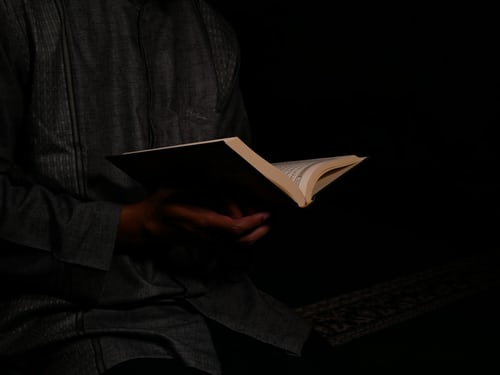Inspiring Older Readers
 posted on 02 Mar 2018
posted on 02 Mar 2018
Time Pieces: A Dublin Memoir by John Banville
I don’t know about other readers, but I find that sometimes I hit a dry spell. Things I have been looking forward to reading turn out to be less impressive than I hoped or reviews suggested; old favourites being reread somehow reveal weaknesses that weren’t previously evident; everything I pull from the shelves seems to be not quite what I was looking for.
This happened recently. I tried to reread Jane Smiley’s reimagining of the Lear story set on the farming prairies of Iowa, in her 1991 novel, A Thousand Acres, but this time found it almost impossible to engage with. I could admire its ambition but couldn’t enjoy it. Camus’s The Fall was less powerful than I remembered it. And I stalled about a third of the way through David France’s epic How to Survive a Plague: The Inside Story of How Citizens and Science Tamed AIDS. I was awestruck by the immense research France had undertaken and by his ability to weave this into the lived experience of himself and the many he knew who were at the frontline of fighting AIDS in the 80s, but the book’s very particular kind of American journalese style made for profoundly tiring reading.
During episodes like this it seems that reading has turned sour and you never know what will have the power to break the spell.
You can’t imagine the relief with which I turned at the weekend to John Banville’s marvellous Time Pieces: A Dublin Memoir, published by Hachette Ireland in 2016. This is a superbly produced book, illustrated throughout with beautifully printed colour and black-and-white photographs by Paul Joyce.
It isn’t really an autobiography as such but a collection of memories and anecdotes about Dublin, writing, Irishness, passing time and to some degree loss. And while loosely organised (one anecdote leads to another; digressions prompt memories that seem newly retrieved even as they are written) the prose is exceptional, a pure joy to read.
It opens with the most beautiful recounting of Banville’s earliest memories of Dublin – the birthdays throughout the 1950s when his mother would take him and his sister on the early train from Wexford to Dublin for a day’s sightseeing and shopping. Banville craved Dublin’s seedy glamour and sophistication as deeply and as strongly as the provincial characters in Chekhov’s stories crave the sophistication of Moscow, and on the return journey he would often be forced to turn aside from his sister and mother so that they wouldn’t see him weeping. As the train made its way through the darkened countryside, he says, he would look at his reflection in the window and see “a blubbering little boy with a heart swollen by grief. I could not have said why or for what exactly it was that I was weeping…but thinking back now, I suppose it was because something was ending, was being folded up, like a circus tent; was becoming, in short, the past.”
This leads him to consider memory itself and the passage of time.
“When does the past become the past? How much time must elapse before what merely happened begins to give off the mysterious, numinous glow that is the mark of true pastness?…What is the magic that is worked upon experience, when it is consigned to the laboratory of the past, there to be shaped and burnished to a finished radiance?”
Time Pieces then is that most Proustian of endeavours, a reflection on memory and the process of memory, and in this sense it is a deeply introspective book, but its brilliance lies in its deftness of touch, its lack of self-indulgence, the sureness with which its scattered materials are reassembled and held up to the lamp of memory.
Yes, there are some literary anecdotes, a handful of stories from Dublin’s glory days and the deathless characters who drank and swaggered and roistered along its cobbled streets and filled its smoky pubs, but what I found attractive is that this is done sparingly, almost apologetically. At one point Banville explains why he could make no fictional use of Dublin: the generations of Irish writers that preceded him – and most especially James Joyce, of course – had used it up, making the city their fictional own in a way that Banville felt he never could.
But in seeking to resurrect this lost Dublin, the city of his youth – when it was just possible to spot Flann O’Brien, “a sad, drink-sodden figure”, disappearing into the distance along Grafton Street, or to realise (many years later) that the mysterious old woman passed on a dim tenement staircase was W B Yeats’s widow – Banville isn’t seeking the exotic. With an “odd aching pleasure”, as he says in his novel The Newton Letter, what he is really searching for is the strangeness of the ordinary, the revealing moments of hidden lives – for it is “out of such moments, commonplace yet plangent, that the past, the longed-for past, assembles itself”.
Time Pieces, then, is a rich and rewarding book, gorgeously written and deeply felt. It is best savoured slowly or you may miss some of its finest, understated glories (for instance, the eighteenth century satinwood table he was once shown which is described swiftly in passing – and in a footnote! – as being “as lithe and poised as an antelope"; or the heron he watches whose bill resembles a “lovingly fashioned ceremonial blade”). I still haven’t quite finished it but already I can feel that the spell has been lifted and my eyes feel washed clean; books have a fresh new allure and the recent weeks of reading disappointments are forgotten. This is a delightful and unexpected book.
Alun Severn
March 2018